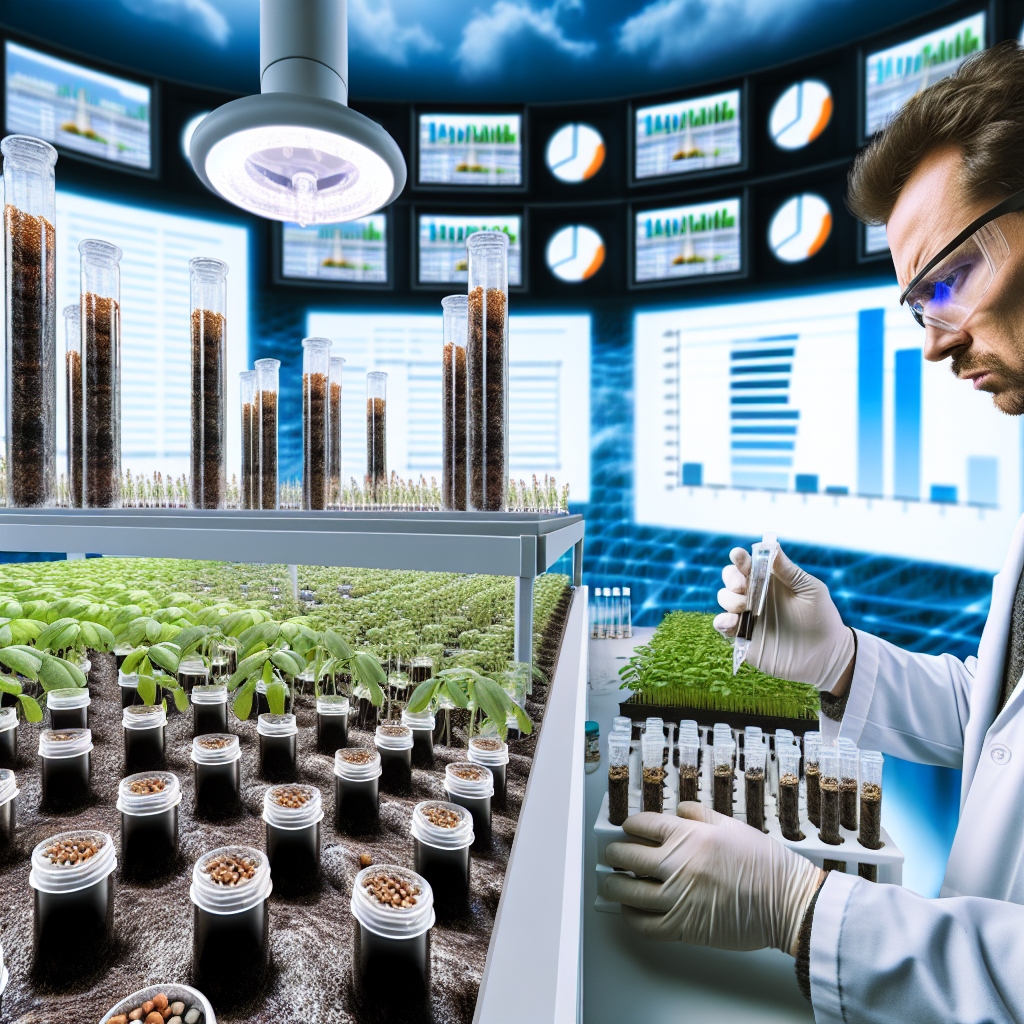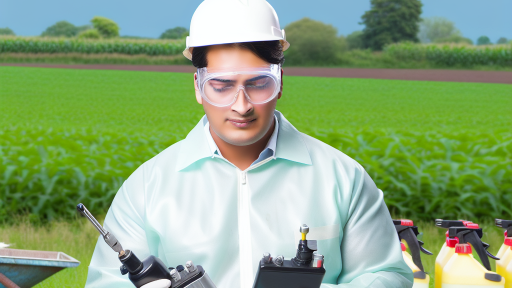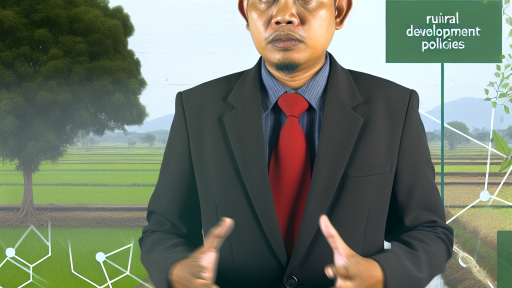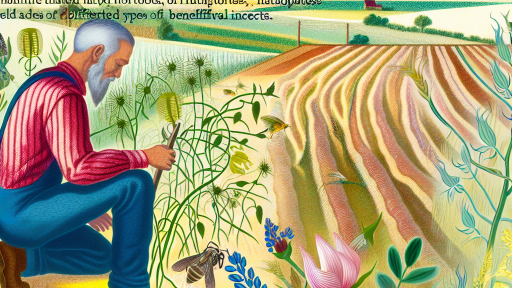The Current State of Sustainable Farming Practices
Overview of Sustainable Practices
Sustainable farming practices focus on producing food without compromising future generations.
These methods often prioritize environmental health and resource conservation.
Farmers implement techniques such as crop rotation and organic farming to enhance sustainability.
Additionally, they aim to minimize the use of chemical fertilizers and pesticides.
Consequently, sustainable farming benefits both the ecosystem and public health.
Challenges in Sustainable Farming
Despite their benefits, sustainable farming practices face various challenges.
Farmers often encounter economic constraints when shifting to sustainable methods.
Moreover, limited access to advanced technology and research hampers progress.
This situation makes it difficult for farmers to compete in the global market.
As a result, many hesitate to invest in sustainable practices.
The Need for R&D Funding
Driving Innovation in Farming
Investment in research and development (R&D) is crucial for enhancing sustainable farming methods.
R&D funding provides farmers with the tools needed to innovate and adapt.
Furthermore, it supports the development of new technologies that improve yield and efficiency.
For example, precision agriculture utilizes data analytics to optimize resource usage.
Improving Education and Training
R&D funding can also enhance education and training for farmers.
Transform Your Agribusiness
Unlock your farm's potential with expert advice tailored to your needs. Get actionable steps that drive real results.
Get StartedWorkshops and training programs enable farmers to learn sustainable techniques effectively.
Moreover, sharing best practices encourages collaboration among the farming community.
Ultimately, education fosters a culture of innovation and sustainability.
Long-Term Benefits of Investment
Investing in R&D for sustainable farming leads to long-term benefits.
It fosters resilience against climate change and resource scarcity.
Moreover, sustainable farming practices contribute to global food security.
By supporting R&D, we can ensure future generations have access to nutritious food.
R&D funding plays a significant role in transforming farming practices sustainably.
Overview of R&D Funding Sources for Sustainable Agriculture
Government Grants and Subsidies
Governments play a crucial role in funding sustainable agriculture.
They provide grants to promote innovative farming techniques.
Many countries have specific programs for agricultural research.
For instance, the U.S. Department of Agriculture (USDA) funds various R&D projects.
Additionally, the European Union offers substantial grants for sustainable practices.
These funding sources often support specific objectives.
Thus, farmers can access resources for sustainable solutions.
Private Sector Investment
Private companies increasingly invest in agricultural research.
They recognize the profit potential in sustainable practices.
Corporations like Bayer and Syngenta fund innovative research projects.
These investments often focus on developing new technologies.
Startups also contribute by bringing fresh ideas to the sector.
Moreover, partnerships between public and private entities are common.
These collaborations enhance the impact of research funding.
Non-Profit Organizations
Non-profit organizations frequently support sustainable agriculture initiatives.
They often allocate funds to research and development projects.
Showcase Your Farming Business
Publish your professional farming services profile on our blog for a one-time fee of $200 and reach a dedicated audience of farmers and agribusiness owners.
Publish Your ProfileOrganizations such as the Rodale Institute provide grants for sustainable research.
They promote regenerative practices that benefit the environment.
Additionally, many non-profits focus on educating farmers about sustainable methods.
Thus, they play a vital role in enhancing farming practices.
Academic Institutions
Universities and research institutions contribute significantly to R&D funding.
They often collaborate with farms to conduct practical research.
Grants from government and private sources fund many academic studies.
These studies help develop sustainable technologies.
Academic research leads to best practices still used today.
Additionally, universities often offer training programs for farmers.
Such initiatives increase awareness of sustainable practices.
Crowdfunding and Community Support
Crowdfunding platforms are emerging as new funding sources.
Farmers can showcase their sustainable projects to attract investors.
Many people are willing to support local and sustainable initiatives.
Community-supported agriculture (CSA) is also gaining popularity.
CSAs allow consumers to invest directly in local farms.
This model ensures steady funding for sustainable practices.
Furthermore, it strengthens community ties and promotes local produce.
Case Studies Showcasing Successful R&D Funded Projects in Sustainable Farming
Innovative Irrigation Solutions
Precision irrigation has transformed water use in farming.
For example, AquaTech Innovations secured funding for smart irrigation systems.
These systems optimize water usage based on soil moisture levels.
As a result, farmers reported up to 30% water savings.
This initiative significantly reduces water waste and conserves this vital resource.
Soil Health Restoration Projects
Healthy soil is crucial for sustainable farming practices.
SoilRevive Inc. received R&D funding to revive degraded farmland.
The project focused on bio-remediation techniques using native plants.
Farmers observed improvements in soil fertility within one season.
Moreover, these practices enhanced carbon sequestration in the soil.
Integrated Pest Management Systems
Pest control is essential for crop health and yield.
CropSafe Solutions developed a new integrated pest management system.
They combined biological control agents with smart pest monitoring technology.
This approach reduced pesticide use by 60% on participating farms.
Consequently, farmers benefited from healthier crops and reduced chemical exposure.
Agroforestry Initiatives
Agroforestry promotes biodiversity and enhances sustainability.
GreenFields received funding to implement agroforestry practices in rural communities.
Farmers planted trees alongside crops to improve ecosystem services.
These initiatives provided shade, reduced soil erosion, and increased productivity.
Additionally, they created habitats for various wildlife species, thus enriching biodiversity.
Vertical Farming Research
Vertical farming presents a solution to land scarcity.
UrbanGrow Labs obtained funding to explore vertical farming techniques.
Showcase Your Farming Business
Publish your professional farming services profile on our blog for a one-time fee of $200 and reach a dedicated audience of farmers and agribusiness owners.
Publish Your ProfileThis innovative method maximizes space and resource use in urban environments.
They conducted trials that demonstrated significant yield increases.
As a bonus, vertical farms use 90% less water compared to traditional agriculture.
Discover More: Renewable Energy Incentives for Agriculture
The Role of Technology and Innovation in Sustainable Farming through R&D
Innovation Driving Sustainable Practices
Innovation serves as a cornerstone for sustainable farming practices.
New technologies enhance the efficiency of agriculture dramatically.
They improve resource management and reduce waste.
By integrating modern techniques, farmers can achieve better yields.
Moreover, these advancements promote environmental sustainability.
Examples of Technological Applications
Sensors and IoT devices support real-time monitoring of crop health.
Drones facilitate precise application of pesticides and fertilizers.
Advanced data analytics optimize planting strategies and schedules.
Bioengineering allows for the development of resilient crop varieties.
These technologies work together to minimize ecological footprints.
The Importance of R&D Funding
R&D funding plays a critical role in fostering agricultural innovation.
Investment in research increases the development of breakthrough technologies.
It enables universities and institutions to explore new farming methods.
With adequate funding, we can address global food security challenges.
This financial support is essential for long-term sustainability in agriculture.
Collaboration Between Stakeholders
Partnerships between governments, private sectors, and research institutions are vital.
Such collaborations amplify the impact of R&D efforts in agriculture.
Farmers benefit from shared knowledge and resources, enhancing productivity.
Additionally, focusing on sustainable practices contributes to economic growth.
The collective efforts reduce dependency on resource-intensive methods.
Future Directions in Sustainable Farming
Looking ahead, integrating AI and machine learning will revolutionize agriculture.
These technologies can predict trends and optimize farm operations.
Furthermore, investing in renewable energy sources enhances sustainability.
Future innovations must focus on reducing carbon footprints in farming.
Ultimately, sustained R&D investment will unlock the potential of sustainable farming.
Gain More Insights: Future of Farming Under Climate Change Legislation
Challenges Faced by Farmers in Adopting Sustainable Practices Without Sufficient R&D Support
Financial Constraints
Farmers often face significant financial obstacles when considering sustainable practices.
Many sustainable methods require initial investments that farmers cannot afford.
Without R&D funding, farmers may hesitate to innovate due to these costs.
Lack of Technical Knowledge
Many farmers lack the necessary knowledge to implement sustainable farming techniques.
This knowledge gap can lead to inefficiencies and ineffective practices.
R&D funding can facilitate training programs to bridge this gap.
Access to Resources and Technology
Farmers struggle with limited access to the latest sustainable technologies.
Current technologies may not be tailored to their specific crops or conditions.
R&D funding can promote the development of localized, sustainable solutions.
Market Pressures and Consumer Demands
Market pressures often push farmers to prioritize short-term yields.
Showcase Your Farming Business
Publish your professional farming services profile on our blog for a one-time fee of $200 and reach a dedicated audience of farmers and agribusiness owners.
Publish Your ProfileThese pressures make it challenging to adopt sustainable methods.
R&D can help farmers demonstrate the long-term benefits to consumers.
Environmental and Climatic Challenges
Adverse weather conditions can complicate the adoption of sustainable practices.
Farmers may need additional support to adapt techniques to climate variability.
R&D funding can assist in developing resilient farming methods for changing climates.
Policy Barriers
Current agricultural policies may hinder sustainable practice adoption.
Farmers may lack incentives to shift from conventional to sustainable methods.
Supportive policies driven by R&D can help remove these barriers.
Gain More Insights: How Agricultural Insurance Protects Against Natural Disasters

Policy Implications and Recommendations for Increasing R&D Funding in Agriculture
Understanding the Current Landscape
Agricultural research and development play a crucial role in enhancing farming sustainability.
Currently, funding levels for agricultural R&D are often inadequate.
This lack of funding limits innovation and the adoption of sustainable practices.
Furthermore, it reduces resilience against climate change impacts.
The Need for Increased Investment
Increasing R&D funding is essential for developing new technologies.
Advanced technologies can lead to more efficient resource use.
Moreover, they can lower the environmental footprint of farming activities.
Investment in R&D also supports farmers in tackling pest and disease threats.
Policy Recommendations
Governments should prioritize agricultural R&D in national budgets.
Allocating dedicated funds for sustainable practices can accelerate progress.
In addition, supporting partnerships between universities and farming communities can boost innovation.
- Encourage public-private partnerships to leverage additional investment.
- Create grants specifically for sustainable farming research projects.
- Facilitate access to research findings for farmers through knowledge-sharing platforms.
Collaboration and Engagement
Engaging diverse stakeholders enhances the effectiveness of R&D funding.
Farmers, researchers, and policymakers should collaborate more closely.
This partnership approach can ensure that research addresses real-world challenges.
Conferences and workshops can facilitate knowledge exchange and networking.
Supporting Innovation through Education
Investing in agricultural education is vital for the adoption of innovations.
Training programs can equip farmers with skills to implement new techniques.
Educational initiatives should focus on sustainability and technology integration.
- Offer workshops on sustainable farming practices for local communities.
- Provide resources for educational institutions to develop agriculture curricula.
- Support extension services that guide farmers in adopting new methods.
Monitoring and Evaluation of R&D Investments
Establishing metrics to evaluate R&D outcomes is crucial.
Regular assessment can help direct funding towards effective programs.
Feedback loops from farmers can enhance the relevance of research initiatives.
Continuous improvement will increase the impact of agricultural R&D investments.
Gain More Insights: Maximizing Renewable Energy Incentives for Modern Farms
Impact of R&D Funding on Crop Yield, Soil Health, and Ecological Balance
Enhancing Crop Yield
R&D funding significantly boosts crop yield through innovative techniques.
Funding enables the development of improved seed varieties.
For example, genetically modified crops can resist pests and diseases.
Additionally, precision agriculture techniques optimize resource use.
These strategies ensure higher production levels with minimal inputs.
Subsequently, farmers experience increased profitability and sustainability.
Improving Soil Health
Investment in R&D enhances soil health by promoting sustainable practices.
Methods like crop rotation and cover cropping maintain soil fertility.
Showcase Your Farming Business
Publish your professional farming services profile on our blog for a one-time fee of $200 and reach a dedicated audience of farmers and agribusiness owners.
Publish Your ProfileResearch also leads to effective soil amendments and organic fertilizers.
Consequently, these approaches reduce soil degradation over time.
Healthy soil retains moisture better, benefiting crop growth.
Moreover, diverse planting strategies enhance microbial activity in the soil.
Supporting Ecological Balance
R&D funding plays a crucial role in supporting ecological balance in farming.
It encourages practices that protect biodiversity and wildlife habitats.
For instance, integrating pest management reduces chemical use and harm.
Furthermore, sustainable farming techniques mitigate climate change effects.
These practices allow natural ecosystems to thrive alongside agriculture.
Consequently, the agricultural sector becomes more resilient to environmental changes.
Future Trends in Sustainable Farming Practices Driven by R&D Investments
Introduction to R&D in Agriculture
Research and development play a crucial role in modern agriculture.
These investments enhance agricultural productivity and sustainability.
Furthermore, R&D promotes innovative solutions to today’s farming challenges.
Advancements in Technology
Technological innovations are transforming sustainable farming practices.
For instance, precision agriculture optimizes resource use.
This approach minimizes waste and maximizes yields.
Moreover, biotechnology supports crop resilience against pests and diseases.
Improved Soil Management
R&D funding leads to better soil management techniques.
Cover cropping and reduced tillage enhance soil health.
As a result, farmers can improve soil fertility and reduce erosion.
Additionally, these practices promote carbon sequestration.
Water Conservation Techniques
Water efficiency technologies are emerging as essential tools.
Smart irrigation systems optimize water use in agriculture.
These systems monitor soil moisture and weather conditions.
Consequently, farmers reduce water consumption while maintaining crop yields.
Organic Farming Practices
R&D is also advancing organic farming methodologies.
Innovative pest management strategies help reduce chemical inputs.
As a result, organic farms can produce healthy food sustainably.
Furthermore, these practices appeal to an increasingly eco-conscious consumer market.
Integrating Renewable Energy
Integrating renewable energy sources into farming is gaining traction.
Solar panels and wind turbines provide alternative energy solutions.
This integration reduces reliance on fossil fuels.
Moreover, it lowers operational costs for farmers over time.
Collaboration and Networking
Collaboration between researchers, farmers, and corporations drives innovation.
Partnerships enhance the practical application of research findings.
Additionally, knowledge-sharing platforms spread best practices.
Such networks encourage a community approach to sustainable farming.
Implications for Sustainable Agriculture
R&D funding is indispensable for the future of sustainable farming.
As innovations emerge, they can transform agricultural practices globally.
By prioritizing R&D, farmers can ensure resilience and sustainability.
Showcase Your Farming Business
Publish your professional farming services profile on our blog for a one-time fee of $200 and reach a dedicated audience of farmers and agribusiness owners.
Publish Your ProfileAdditional Resources
Path to a New Farm Bill: Sustainable and Organic Research …




